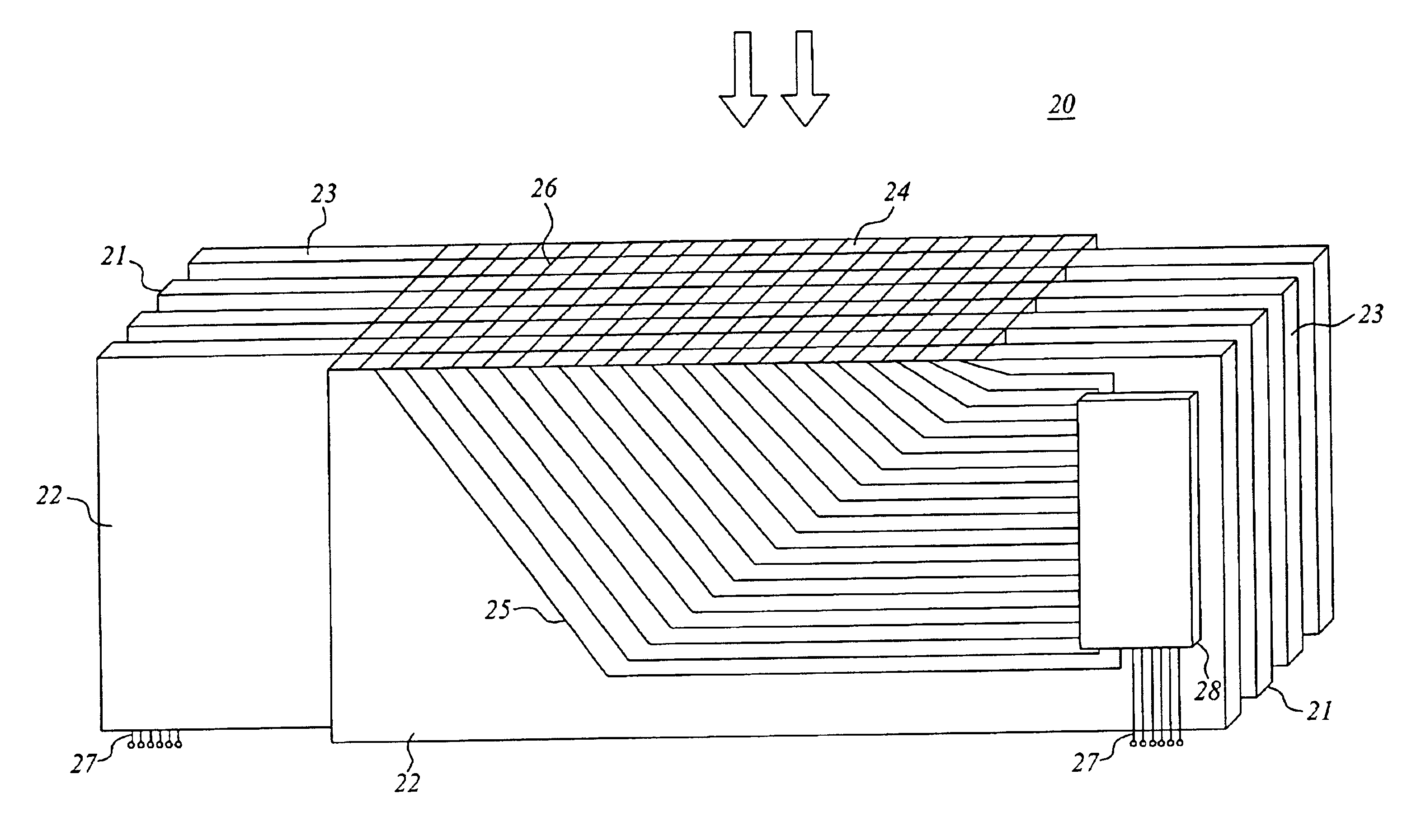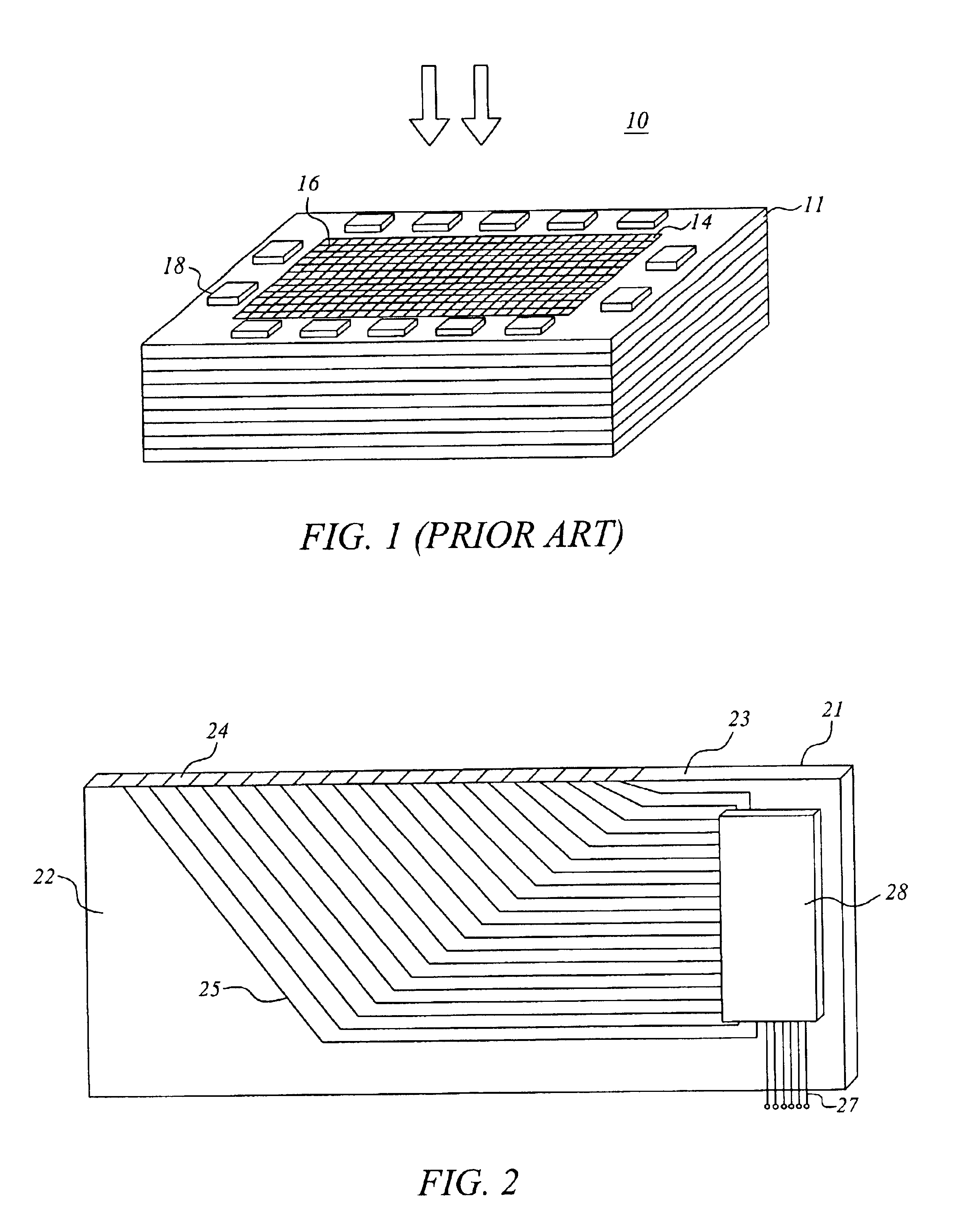Radiation sensor device
a sensor device and radiation sensor technology, applied in the field of radiation imaging systems, can solve the problems of difficult to achieve sufficient resolution, easy damage to semiconductor surfaces by x-rays or mev photons, radiation sensitive, etc., and achieve the effect of improving image resolution, simple and comparatively inexpensive manufacturing
- Summary
- Abstract
- Description
- Claims
- Application Information
AI Technical Summary
Benefits of technology
Problems solved by technology
Method used
Image
Examples
Embodiment Construction
Throughout the following description similar or corresponding elements bear the same reference numbers. The term “radiation” comprises electromagnetic radiation, such as visible light, as well as particle radiation including radiation of charged particles, e.g. electrons, and uncharged particles, e.g. neutrons.
Many radiation systems of today require read-out units with a comparatively large number of radiation sensitive elements. Integrating electronic readout may often be the only practically feasible alternative, in particular at high charge-flow rates. As mentioned, it would hereby be desirable to couple certain read-out electronics, such as a charge amplifier and / or a multiplexer, to each pixel. Then severe prior-art problems would be avoided, since charges would not have to be moved in a controlled manner on a special surface, nor would radiation sensitive elements, like transistors, have to be arranged at the pixels. However, such an implementation implies one amplifier and / or...
PUM
 Login to View More
Login to View More Abstract
Description
Claims
Application Information
 Login to View More
Login to View More - R&D
- Intellectual Property
- Life Sciences
- Materials
- Tech Scout
- Unparalleled Data Quality
- Higher Quality Content
- 60% Fewer Hallucinations
Browse by: Latest US Patents, China's latest patents, Technical Efficacy Thesaurus, Application Domain, Technology Topic, Popular Technical Reports.
© 2025 PatSnap. All rights reserved.Legal|Privacy policy|Modern Slavery Act Transparency Statement|Sitemap|About US| Contact US: help@patsnap.com



